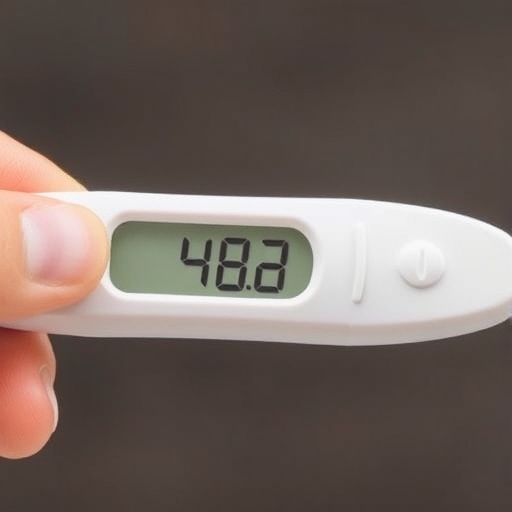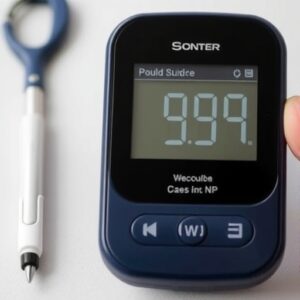If you’re managing diabetes or simply monitoring your blood sugar levels for overall health, it’s essential to understand what your readings mean. Blood sugar levels fluctuate throughout the day, and interpreting these fluctuations can help you make informed decisions about diet, exercise, medication, and lifestyle. Understanding your blood sugar levels is a crucial step toward better managing your health and preventing complications.
In this post, we’ll walk you through the basics of interpreting blood sugar readings, explaining what your numbers mean, how to respond to them, and how to take control of your health.
The Basics of Blood Sugar Levels
Blood sugar, or glucose, is the primary energy source for your body’s cells. Your blood sugar levels indicate how much glucose is in your bloodstream. The body typically maintains blood sugar within a narrow range. However, with conditions like diabetes or insulin resistance, this balance can be disrupted, leading to highs or lows that need to be monitored and managed.
What Are Normal Blood Sugar Levels?
Blood sugar levels vary throughout the day depending on factors like food intake, physical activity, medications, and stress. Here are the general guidelines for normal blood sugar levels:
- Fasting (before meals): 70–99 mg/dL
- Post-meal (2 hours after eating): Less than 140 mg/dL
- Bedtime: 100–140 mg/dL
For individuals with diabetes, target blood sugar ranges may differ, so it’s important to consult with your healthcare provider to set your own personalized goals.
Understanding Your Blood Sugar Readings
1. Low Blood Sugar (Hypoglycemia)
Low blood sugar, or hypoglycemia, occurs when your blood glucose level drops below 70 mg/dL. Symptoms of low blood sugar can include shaking, sweating, confusion, dizziness, irritability, and weakness. If left untreated, hypoglycemia can lead to serious complications, including loss of consciousness.
What to do:
- Treat with fast-acting carbohydrates: If you notice symptoms of low blood sugar, quickly consume a quick source of sugar, like a glucose tablet, fruit juice, or regular soda (not diet).
- Recheck your levels: After treating low blood sugar, wait about 15 minutes and recheck your glucose to ensure it’s rising back to a safe level.
If your levels don’t improve or you continue feeling unwell, seek medical attention.
2. Normal Blood Sugar
A normal blood sugar reading means that your body is effectively managing glucose levels. For those without diabetes, blood sugar levels typically stay within the normal range. However, for individuals with diabetes, achieving and maintaining normal blood sugar levels may require careful management of diet, exercise, medication, and lifestyle.
What to do:
- Maintain your healthy habits: If your blood sugar is within the normal range, continue following your meal plan, staying active, and managing stress to keep your levels stable.
- Track your readings: Continue testing your blood sugar regularly to monitor trends, even when your levels seem normal.
3. Elevated Blood Sugar (Hyperglycemia)
When your blood sugar levels exceed normal ranges, you may experience hyperglycemia or high blood sugar. Persistent high blood sugar can be a sign that your diabetes is not well-managed. Common symptoms of hyperglycemia include frequent urination, excessive thirst, blurred vision, and fatigue.
What to do:
- Check for potential causes: Elevated blood sugar can be triggered by several factors, including overeating, stress, illness, or missed medication doses.
- Follow your action plan: If you experience high blood sugar, follow the instructions your healthcare provider has given you. This may include adjusting your medication or insulin doses and drinking plenty of water to help flush excess glucose from your system.
Consistently high blood sugar levels can cause long-term damage to blood vessels, nerves, and organs, so it’s crucial to address and prevent hyperglycemia.
4. Post-Meal Blood Sugar
Post-meal blood sugar levels provide insight into how your body responds to the foods you eat. A typical post-meal (or postprandial) reading should be less than 140 mg/dL two hours after eating. Higher levels indicate that your body may not be processing glucose efficiently.
What to do:
- Analyze your food choices: If your post-meal reading is elevated, consider adjusting your portion sizes, eating fewer refined carbs, and increasing fiber in your meals.
- Track trends: Over time, tracking your post-meal blood sugar will help you identify which foods cause spikes, enabling you to make more informed dietary choices.
5. Bedtime Blood Sugar
Your bedtime blood sugar gives you an idea of how well your body is managing glucose overnight. For most people, bedtime blood sugar should be between 100 and 140 mg/dL. If your levels are too high or too low before bed, it can lead to disruptions in your overnight blood sugar control, potentially causing spikes or drops while you sleep.
What to do:
- Check your evening routine: If your bedtime reading is higher than usual, consider reviewing your evening meal and activity levels. You may need to make adjustments to your insulin or medication regimen before sleep.
What to Do if Your Readings Are Out of Range
It’s important to remember that blood sugar levels can fluctuate due to various factors, and occasional out-of-range readings don’t necessarily indicate a problem. However, consistent highs or lows should be addressed with the help of your healthcare provider.
Here are a few tips if you notice patterns in your blood sugar readings:
- Adjust your diet: If you see post-meal highs, consider reducing portions of high-carb foods and increasing your intake of fiber and protein to help balance blood sugar.
- Monitor your medication: If you’re on insulin or other medications, your doctor may need to adjust the dosage based on your readings.
- Exercise regularly: Physical activity helps lower blood sugar levels and improves insulin sensitivity.
- Stay hydrated: Drinking water can help flush excess glucose from your bloodstream.
Keep a Blood Sugar Log
Tracking your readings over time is essential for understanding how your blood sugar behaves. By maintaining a log of your daily readings, along with notes on what you ate, your activity levels, and your medication, you’ll be able to identify patterns and make adjustments accordingly. Many modern blood sugar meters sync with apps, making it easy to track and analyze your data digitally.
Work with Your Healthcare Provider
If you notice any patterns of high or low blood sugar, or if you’re unsure how to interpret your readings, always reach out to your healthcare provider. They can help you create a personalized action plan to address fluctuations and optimize your blood sugar control.
Final Thoughts
Interpreting your blood sugar readings is an essential skill for managing diabetes and maintaining overall health. By understanding what different blood sugar levels mean and knowing how to respond to them, you can take control of your health and make informed decisions about your diet, lifestyle, and treatment. Regular monitoring, consistency, and working closely with your healthcare team are key to managing blood sugar effectively.
At BloodSugarHealthy.com, we’re dedicated to helping you manage your blood sugar with confidence. Stay tuned for more tips, resources, and expert advice to help you live your healthiest life.
This post provides a comprehensive and easy-to-understand guide on how to interpret blood sugar levels and take the appropriate steps to manage them. Let me know if you’d like any adjustments or further details!





